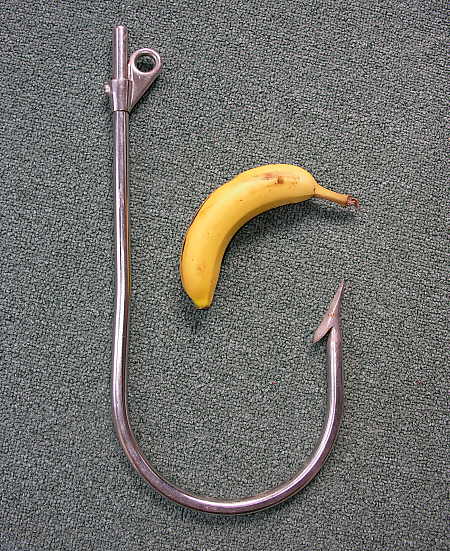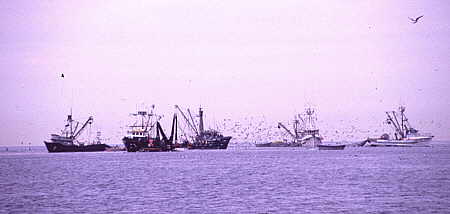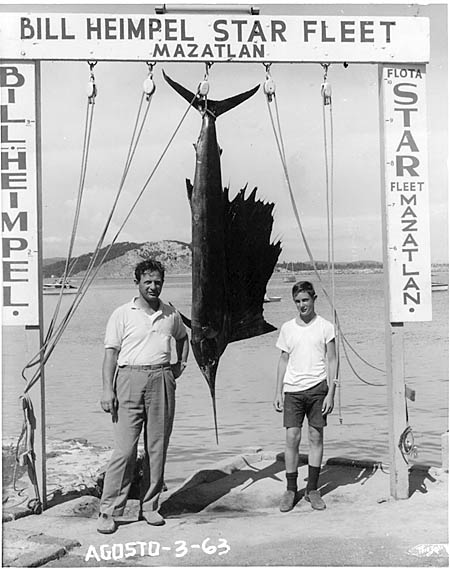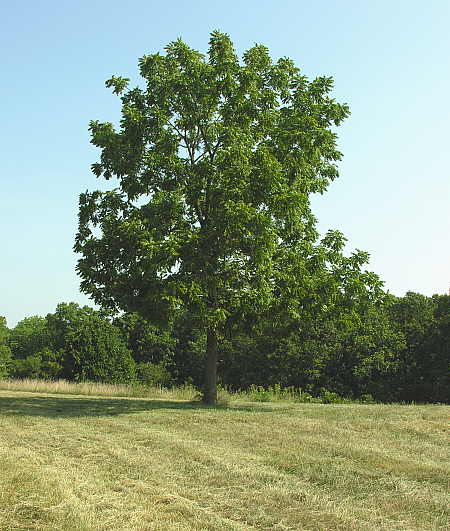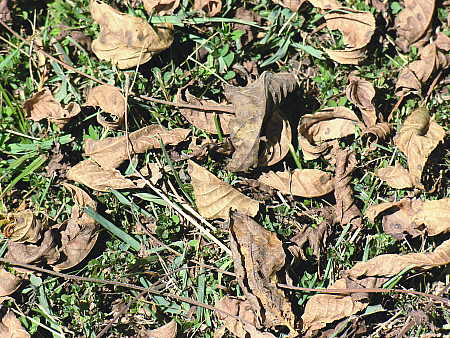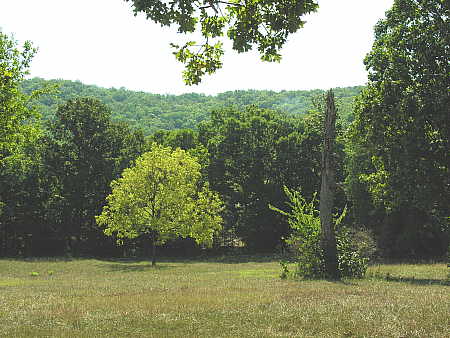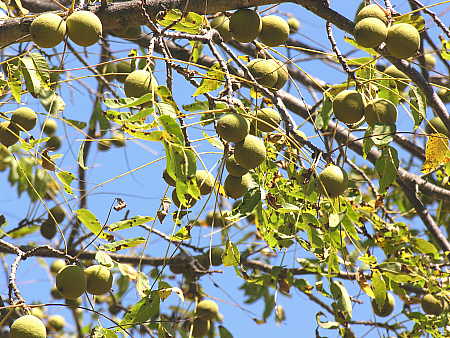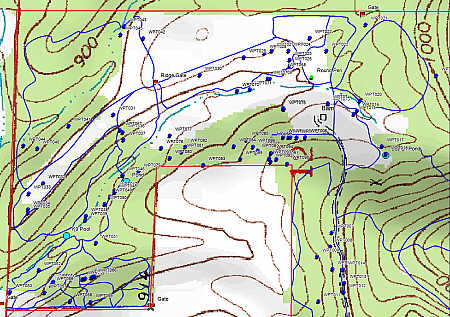“I understand that it is illegal to burn household wastes these days. What do we do with our trash?”, I asked the realtor who was showing us the property. “Well,” he replied, “most folk out here just burn it anyways, those who don’t call M…n Sanitation, who will pick it up at the paved highway weekly.”
I thought back to the earliest days of my youth, and I remembered an appliance that was a common sight in suburban neighborhoods at the time, called a backyard incinerator. You can see an incinerator behind my cousin, Reed, in the photograph below.Â
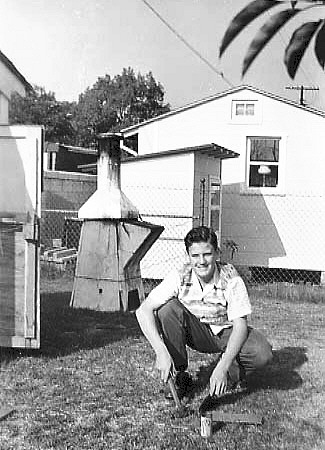
Backyard incinerators were banned in urban areas long ago, due to air-pollution concerns. Today, residential incinerators and their rural counterparts, the burn-barrel, are prohibited from burning household waste materials in all areas. So, regardless of what others may do, I dismissed the possibility of burning my trash. Besides, who wants to breathe in all those toxins anyway?
Another method of trash disposal that I have seen employed on rural acreages is a self-built landfill. Using a backhoe, a large notch is carved out of the side of a hill.  A layer of trash is piled into the notch, then a layer of soil, another layer of trash and so forth until the notch is filled, at which time another would be dug. Besides being illegal, under many authorities and for many reasons, I would not want to be the one relying on my well for pure, drinkable water with a home-made landfill on the premises.Â
Needless to say, we opted to call M…n Sanitation, and for $18/month they put me on their weekly trash route.  We were allowed up to 4 bags of trash per week, which had to be placed at the junction of the paved highway and the dirt road leading into our property.Â
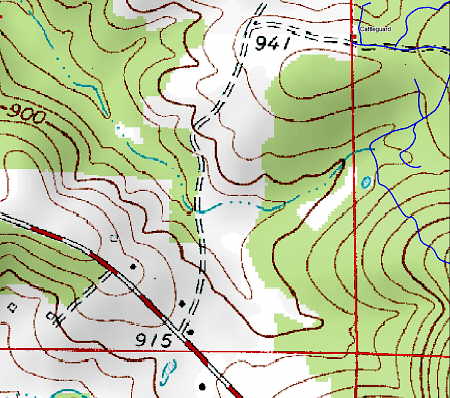
On each side of the dirt road, where it meets the highway, are houses with small yards. There is no reasonable place for me to place a permanent trash collection bin, so I had to leave my trash at the highway in plastic trash bags. Each Tuesday morning, prior to 7:30AM, I hauled my trash over the two miles of dirt road to the highway, even when the dirt was covered with snow in the wintertime, as shown below-
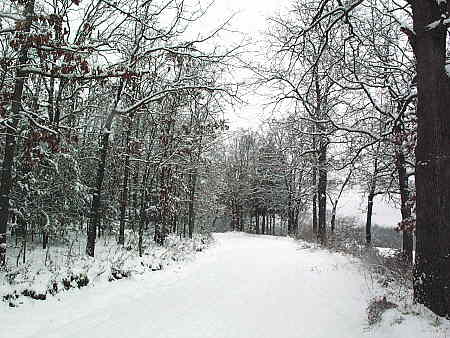
I followed this routine for about 2-3 years until, much to my dismay, a neighbor’s dogs discovered that there was a nice supply of trash about a quarter mile down the road from them, and if they waited until about 7:35AM, they would be in for a treat of one sort or another. After a few weeks of my having to pick up trash strewn up and down the highway after the dogs got into it, I decided to sit guard, in my truck, until the sanitation truck came to pick up the bags. This routine grew old after the first two or three times that the trash truck ran late, forcing me to sit, like an idiot, in my truck guarding my trash! Enough of this nonsense – I needed to find a better way.
You might remember from a previous post, entitled A Tractor For Chickens?, that I was using a metal chicken tractor for storing trash. You can see it in use in the following photograph-
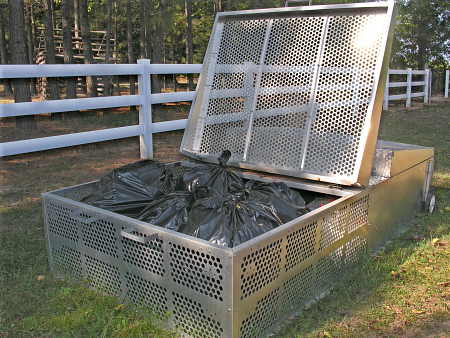
It just happened to work out that when the chicken tractor gets full, it creates a perfectly sized load for the bed of my pickup truck. Beginning with the lightweight recyclables, such as the cardboard and feed bags shown below, I load the truck in layers, with the heaviest items on top.
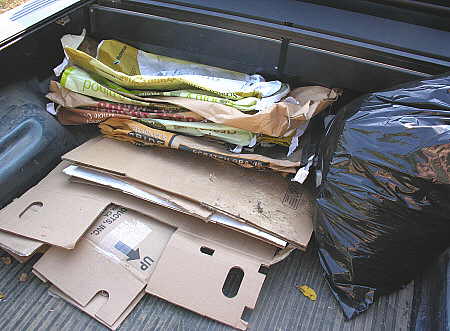
When all of the bags have been loaded into the truck, it forms a tight load, and because of the weight, nothing blows away. When the loading is finished, the truck looks like this-
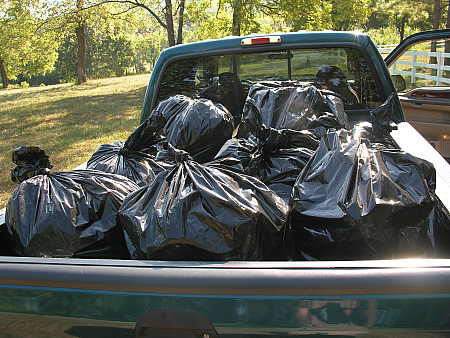
With the truck now loaded with the trash and recyclables accumulated over a couple of months, it is a simple matter to drive the 30 miles to the County Transfer Station, where the trash is deposited into the massive, industrial-sized compactor you see below.
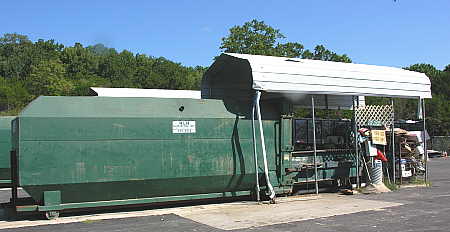
The Transfer Station also acts as the county recycling center, where selected items are collected for recycling. Additionally, every spring and every fall, the Transfer Station hosts a countywide cleanup for the benefit of our area. For the duration of one week, residents are allowed to drop off one truckload per day of trash, construction materials, and other landfill-permitted items, and old appliances.
There is no provision at the Transfer Station for the recycling of electronic equipment, which is very harmful to the environment if disposed of in a landfill. But all is not lost, as there is a wonderful, FREE program for the recycling of electronics available to residents of Arkansas and other states, that can be found in a previous post entitled Project Green-Fed E-Cycling, in which they send you shipping boxes and materials that you fill with old electronics, and call for a free Fed-Ex pickup from your home.
On our next outing, I might take you with me to Tom-Barr Industries, where I periodically drop off a truck-load of scrap metals and old barbed-wire for recycling. Remember to bring your gloves, if you want to help me.
Â



